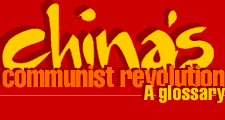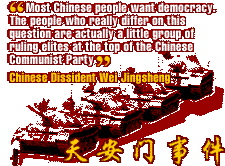|
|
 |
  |
|
|
The death of an outspoken member of the Communist Party, Hu Yao Bang, sparked a mass demonstration of mourning students in Tiananmen Square, which was open to the public. Demonstrators soon began to call for greater democracy and liberalisation within the CCP. And for the first time in Chinese history, the demonstration was captured live on television and broadcast around the world. The authorities' response was initially lenient, but eventually martial law was declared and police entered the square. Still the activists were not ejected, and on 30 May students erected the "Goddess of Democracy" statue, cheered on by members of the police. Eventually the CCP became impatient. The demonstration was a grave embarrassment as it came during a Sino-Russian summit. On 4 June 1989 the cordial atmosphere came to an end. Under the orders of Deng Xiaoping, troops and tanks of the People's Liberation Army stormed into Tiananmen Square and ended the peaceful protest with a massacre in which thousands were killed. |